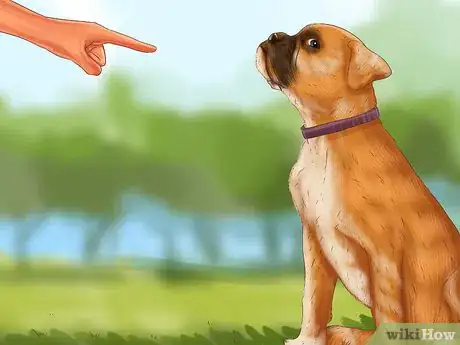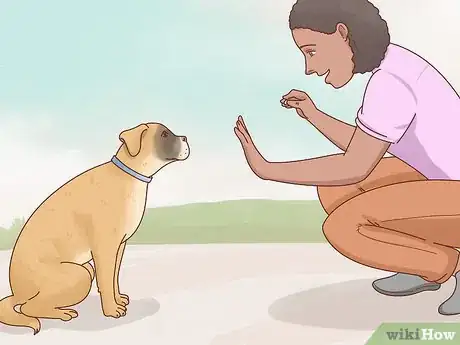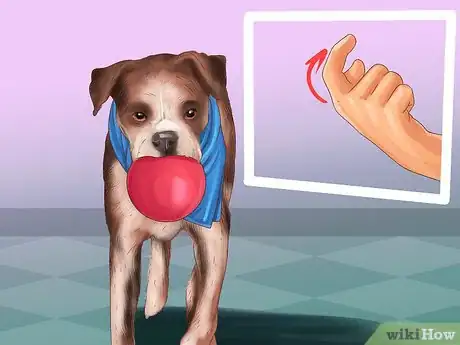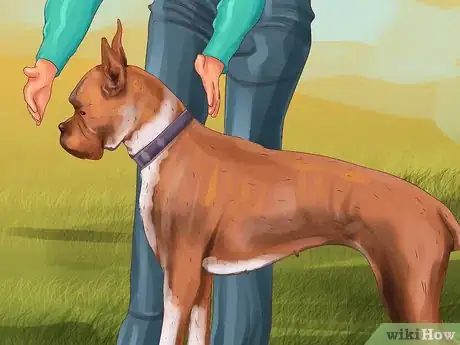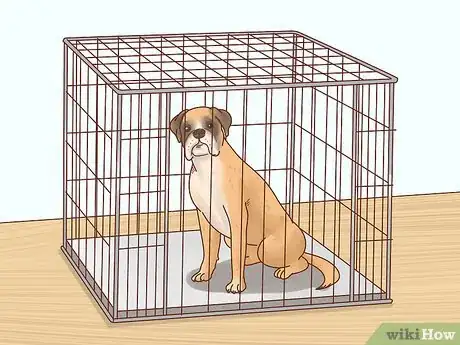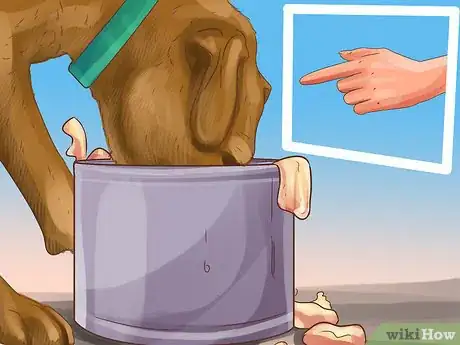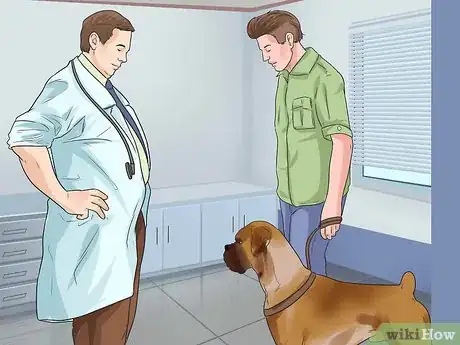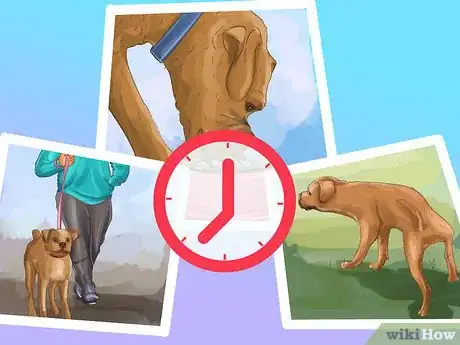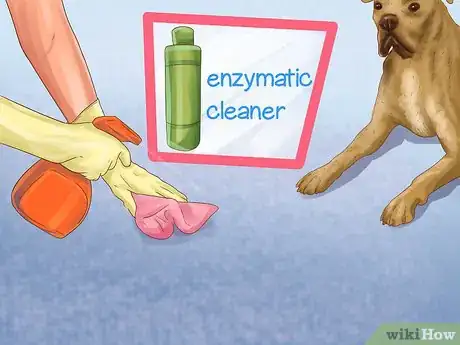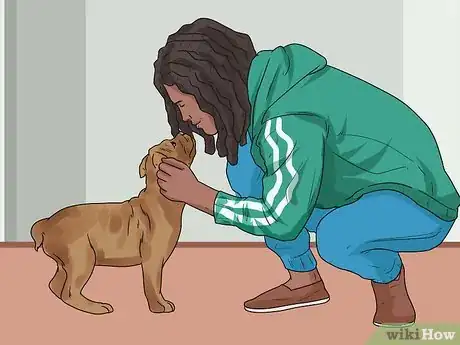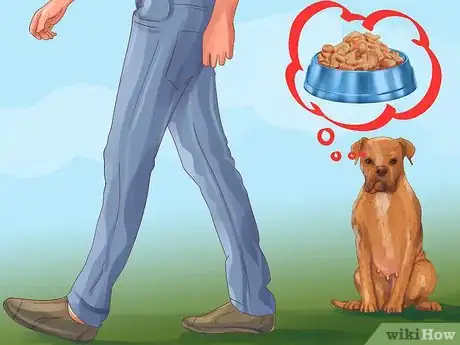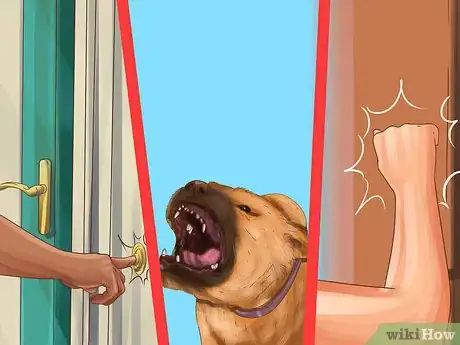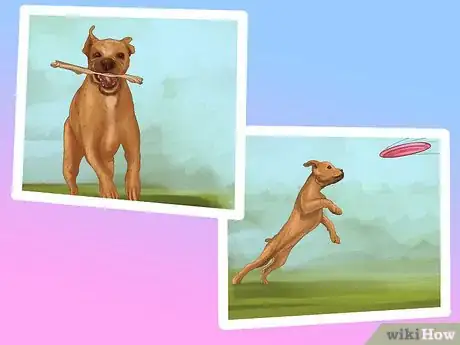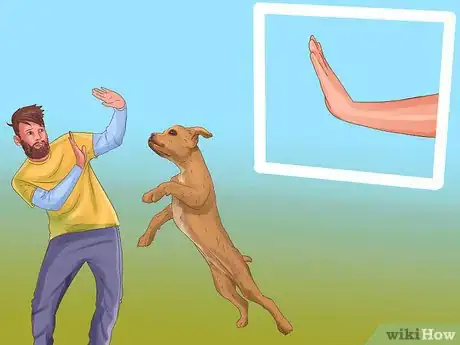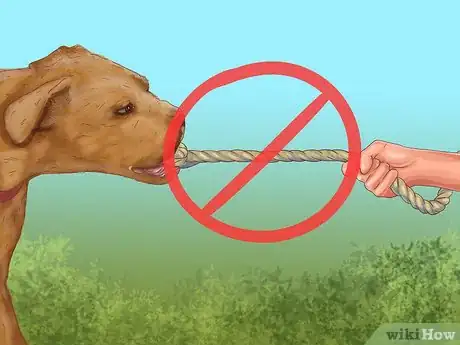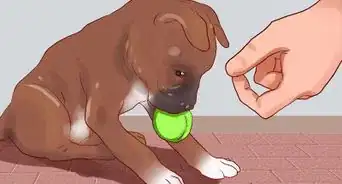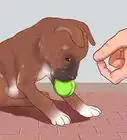This article was co-authored by Dani Pedraza. Dani Pedraza is a Professional Dog Trainer and a Co-Owner of The Big City Woof Walker with presences in NYC and Chicago. Dani is passionate about providing personal, quality pet service and treatment and is very knowledgeable about training dogs using positive reinforcement and a force-free approach. As a Certified Dog Trainer (CCDT), Dani graduated from CATCH Canine Trainer Academy’s Master Course program.
There are 10 references cited in this article, which can be found at the bottom of the page.
This article has been viewed 33,499 times.
Boxers are generally great with other dogs and children, making them wonderful family dogs. They require plenty of exercise, including both physical and mental exertion. Make sure that a high energy dog that requires a strong alpha is right for your lifestyle before bringing one home. Obedience training techniques can offer effective solutions if your Boxer has bad habits, such as stealing food or going to the bathroom indoors. Train your Boxer to understand that you are the alpha, and learn how to think like it does in order to teach it what habits are unacceptable. If home training is ineffective despite your persistence, consider hiring a professional trainer.
Steps
Nailing Training Basics
-
1Start training as early as possible. If you’ve just acquired a Boxer puppy, begin training immediately. Start practicing command words, such as sit and stay, and get your puppy on a set eating and bathroom routine.
- Socialize your puppy early by exposing it to other dogs, children, and crowds of people. Let it get used to being around different sights and sounds by taking various routes when you walk it.
- Keep training sessions short and try to make them fun when you’re just starting to train a puppy.
- Adult dogs are more difficult to train than puppies. It’ll take more persistence and time, but start training your new adult dog as soon as you bring him home.
-
2Begin with basic command words. Whether you’re training a puppy or adult dog, you should start with basic commands, such as sit, come, and heel. Break up treats into small pieces to use as rewards. Say the command word, and reward your dog immediately when it follows the command. You’ll have to repeat the process around twenty times when you’re training your dog so the behavior becomes automatic.[1]
- Training your dog is an important step in breaking bad habits. You have to show your dog that you are the alpha in order to stop it from marking its territory, begging food or stealing scraps, being aggressive, or engaging in other bad behavior.
Advertisement -
3Practice the sit command. To make your dog sit, hold a treat in your hand while standing in front of him. Then, use the treat as a lure to get your dog to sit down. Move the treat over your dog's head in an arc so that he will naturally sit down to keep following the treat with his eyes. As your dog's butt hits the ground, say "sit" to mark the behavior. Make sure that you reward your dog with the treat right after he sits as well.
- If your dog doesn’t naturally sit, you can place gentle pressure on his bottom to guide him into a seated position.[2]
- Repeat the process for a few minutes every day and then start to phase out the treat. For example, you might just raise your empty hand in an arc to get your dog to sit, and then reward him with some praise and a belly rub.
-
4Train your dog to come. Teach your dog to come by holding position five steps away from it, saying “Come,” and holding a treat out in your hand. When it comes to you, give it the treat and use happy expressions and words to offer positive reinforcement. Repeat the process twenty times, and gradually step back to farther distances.[3]
-
5Teach your dog to heel. When you walk your dog, make sure it walks beside or slightly behind you. Your dog should not pull the leash or walk uncontrollably in front of you. Say “Heel” when the dog is right beside you as you walk, and give it a treat if it stays there.[4]
- If it rushes out in front of you, stop walking and wait a minute to reset the routine.
- Make sure to offer other forms of positive reinforcement when your dog walks beside you. Say, “Good heel! Good job!” and offer happy expressions.
-
6Be consistent about rules. If you want to break your Boxer’s bad habits, you need to be consistent about the rules you enforce. For example, if your dog has a problem with chewing, don’t offer it an old shoe or sock and expect it not to go after a newer article of your clothing. Your dog won’t know the difference between old and new shoes.[5]
- If you don’t want it to beg for table scraps, never offer it human food, and tell your guests not to offer it any food.
- In general, never be soft on any of your rules, and don’t make any exceptions. It will just confuse your dog.
-
7Use discipline only the exact moment you catch your dog doing something wrong. If you come home and find your Boxer went to the bathroom inside or chewed something, don’t yell or discipline it. You’ll only confuse your dog, and it won’t know exactly why you’re yelling.[6]
- If your dog got into the trash or went to the bathroom inside hours before you discipline it, it won’t be able to make the connection between the bad behavior and your response.
- Alternatively, if you see your dog doing something it’s not supposed to, say “Hey!” in an authoritative voice to get its attention, and interrupt it from doing whatever it’s doing.[7]
Breaking Bad Bathroom Habits
-
1Spay or neuter your dog before it reaches maturity. If you have a Boxer puppy or juvenile, consider spaying or neutering it before it becomes fully mature. Intact males are particularly notorious for marking their territory by going to the bathroom where they shouldn’t.
- If your dog is too old to be spayed or neutered, or if you prefer to leave it intact, you’ll need to double down on training and obedience routines to keep marking at a minimum.
- Use regular command word training, especially with your intact male, to show that you’re the alpha and that your house is not the dog’s territory.
-
2Keep your Boxer on a schedule. Put your puppy or dog on a strict eating and bathroom schedule as soon as you bring it home. Take it outside first thing in the morning, several times during the day, and a half hour before bed. Feed it in the morning and evening, and take it out for a walk fifteen minutes after it eats.[8]
- If you have a puppy, you will need to take it outside every 30 minutes for training purposes. Two hours is the maximum time that a puppy can hold its bladder. It is also important for you to praise your puppy after he goes potty outside.
- If you have an intact male Boxer, don’t let it mark its territory when you’re out on walks. Say “Hey!” when it raises its leg, or pat its leg down and pull along to get it to continue walking if it doesn't respond to a verbal command. Do your best to only let it relieve itself if it actually needs to use the bathroom, and to look for your permission to go.
- Making the dog feel the need to defer to your judgment when using the bathroom will cut down on marking territory indoors or other undesirable places.
-
3Clean up urine immediately. Use an enzymatic cleaner, such as store-bought pet odor eliminating cleaner, or vinegar and lemon juice. Clean up urine or feces as soon as you notice it, and be on the lookout for urine marks, especially if you have an intact male or puppy. If you ignore or miss a urine stain, your dog will be more likely to remark that spot and continue to use the bathroom inside.[9]
-
4Offer plenty of positive reinforcement. When your Boxer uses the bathroom outside, say “Great job! I’m so proud of you!” Use exaggerated, happy expressions, pet it, and use whatever other positive gestures you use to show your dog how happy you are that he’s used the bathroom correctly.[10]
- All dogs naturally want to please their owners. Positive reinforcement is typically much more effective than yelling or other forms of discipline.
-
5Rule out other bathroom-related problems. If your Boxer’s bad bathroom habits seemingly came out of nowhere, it might be suffering from a urinary tract infection or other incontinence issue.
- If you’re concerned about a possible UTI, take a sample of your dog’s urine to your vet, or ask your vet to take the sample for you.
- Ask your vet about anxiety-related causes, especially if your Boxer shows signs of anxiety such as excessive whimpering, keep its tail between its legs, and using the bathroom when the doorbell rings, if you turn the television on, and in response to similar sights and sounds.
Stopping Aggressive Behavior
-
1Stop aggressive behavior around food. Don’t set your Boxer up for failure: eliminate the opportunity and try not to leave any scraps or easily accessible food unattended.[11] Never give it table scraps or human food, and if you have people over, instruct them not to feed your dog.
- Practice extinction conditioning: if your dog begs, ignore it completely. Don’t look or speak to it at all, and be prepared to continue ignoring even if it barks louder or starts to act up. Eventually it will learn that begging won’t result in a reward.[12]
- Even offering human food to your dog once will teach it that it can beg for food or try to steal food, so avoid getting soft on your rules. If you’re inconsistent and treat it like a lottery system, your dog will just get more persistent.
- Consider giving your dog a toy or treat to keep it busy just before you sit down for dinner. If you get through dinner without your dog begging or trying to steal food, reward him afterwards with a treat and positive reinforcement.
- Remember that scavenging is a powerful natural instinct, so don’t get too impatient with your dog if you can’t stop it from stealing food. If the problem persists, avoid having any food out in front of it, and consider restricting its access to the kitchen using baby gates.
-
2Stop excessive barking. When dogs bark at doorbells, knocks, telephone ringing, or other sounds, they typically think they’re doing you a favor by letting you know what’s happening. If your Boxer barks excessively at the doorbell or phone, try training it to go to a designated area whenever it hears that particular sound.[13]
- First, use command word training to teach it to go to a mat (or another designated area). Say “Mat!” and physically guide it over to the mat, then offer a treat and positive reinforcement. Repeat this process to teach it what the word means. Gradually set the mat farther away from the dog before giving the command as it begins to understand what the word means.
- Once you’ve taught your dog how to go to its mat, add the command word to the sound of the doorbell, knock on the door, or phone ringing. Start with the dog away from the mat, give a quiet knock on the door, and say “Mat!” Give your dog a treat if it goes onto the mat.
- Use a command word like “Sit” instead of “Mat” if you find it’s easier.
- It’ll take some time, but repeat the process at least twenty times. Practice every day, continuing to say “Mat!” in conjunction with the sounds that typically cause your dog to bark.
- Eventually, substitute the command word for the sound entirely, and be sure to offer plenty of positive reinforcement when your dog goes to its mat at the sound of the doorbell or knock.
-
3Curb bad behavior by increasing your Boxer’s exercise. If your Boxer’s acting up, it might need more exercise. Decide if the behavior seems more playful than aggressive, and make sure it isn’t accompanied by growling, barking, snarling, or showing teeth.
- Increasing and varying its exercise if your Boxer is acting up in a non-aggressive way. Just letting a Boxer outside to use the bathroom is not sufficient exercise. It needs one to two hours a day of brisk exercise that involves both physical and mental exertion.[14]
- Play frisbee with your dog, play fetch, take it swimming, and incorporate command word training into your play, such as having your dog sit before going to fetch a ball or stick.
- If your Boxer starts to act up or act aggressively, such as when passing another dog on a walk, redirect its attention. Say “What’s that?” and point in the opposite direction, then continue on your walk. Give the leash a tug to let your dog know it's time to move on, especially if it didn't respond to your verbal command and pointing.
-
4Keep your dog from jumping on people. Boxers are energetic dogs and love to jump, but you should never let your dog jump on you or other people. When your dog jumps, do you best to completely ignore its behavior. Don’t make eye contact, push it off, or touch it.[15]
- Try to simply step away without making any other acknowledgment.
- Your dog doesn’t know what “No get down!” means, and if you push it off, it’ll probably think you’re playing with it.
- Not giving your Boxer any attention at all is more of a punishment than yelling or hitting it, and will teach it that jumping is unacceptable behavior.
- Consider the amount of exercise it gets and increase or vary if necessary.
-
5Avoid high-arousal games like tug of war or chasing. If your Boxer is starting to develop aggressive habits, don’t encourage it with aggressive play. Don’t play games that are high arousal or teach your dog to be possessive with a toy, such as tug of war.[16]
- All games involving fetching should end with you getting the toy in the end. If your dog won’t drop the stick or ball when you say “Drop!” then stop playing and ignore it.
- Don’t harass your Boxer by staring into its eyes for extended amounts of time, abruptly awakening it, hugging it tightly, or placing your arm over its shoulders, which is a sign of dominance and aggression.
-
6Consider training classes if your dog is aggressive. Find a trainer if your dog engages in aggressive behavior and doesn’t respond to command training, ignoring, or other measures you take on your own. Talk to your vet or local humane society about finding a reputable trainer.[17]
- Find a licensed behaviorist by searching the Animal Behavior Society: http://www.animalbehaviorsociety.org/web/index.php
- Ask friends or family for a referral to trainers they might have hired.
- Contact your local pet store and ask if they have dog training classes. Ask if they have classes for dogs and their owners so you can learn more about how to curb aggressive behavior.
Expert Q&A
-
QuestionWhat should I train my dog to do first when I bring it home?
 Dani PedrazaDani Pedraza is a Professional Dog Trainer and a Co-Owner of The Big City Woof Walker with presences in NYC and Chicago. Dani is passionate about providing personal, quality pet service and treatment and is very knowledgeable about training dogs using positive reinforcement and a force-free approach. As a Certified Dog Trainer (CCDT), Dani graduated from CATCH Canine Trainer Academy’s Master Course program.
Dani PedrazaDani Pedraza is a Professional Dog Trainer and a Co-Owner of The Big City Woof Walker with presences in NYC and Chicago. Dani is passionate about providing personal, quality pet service and treatment and is very knowledgeable about training dogs using positive reinforcement and a force-free approach. As a Certified Dog Trainer (CCDT), Dani graduated from CATCH Canine Trainer Academy’s Master Course program.
Professional Dog Trainer I would start with crate training. Crate training can help prevent separation anxiety, establish boundaries with your new dog, and give them a safe, cozy den to retreat to.
I would start with crate training. Crate training can help prevent separation anxiety, establish boundaries with your new dog, and give them a safe, cozy den to retreat to. -
QuestionWhat should I do if my boxer puppy is nipping and teething?
 Dani PedrazaDani Pedraza is a Professional Dog Trainer and a Co-Owner of The Big City Woof Walker with presences in NYC and Chicago. Dani is passionate about providing personal, quality pet service and treatment and is very knowledgeable about training dogs using positive reinforcement and a force-free approach. As a Certified Dog Trainer (CCDT), Dani graduated from CATCH Canine Trainer Academy’s Master Course program.
Dani PedrazaDani Pedraza is a Professional Dog Trainer and a Co-Owner of The Big City Woof Walker with presences in NYC and Chicago. Dani is passionate about providing personal, quality pet service and treatment and is very knowledgeable about training dogs using positive reinforcement and a force-free approach. As a Certified Dog Trainer (CCDT), Dani graduated from CATCH Canine Trainer Academy’s Master Course program.
Professional Dog Trainer If your dog is teething or nipping at you, you want to redirect them to something else that they are allowed to chew on, like a safe chew toy. That really goes for any unwanted behavior—always redirect your dog to what it should be doing instead.
If your dog is teething or nipping at you, you want to redirect them to something else that they are allowed to chew on, like a safe chew toy. That really goes for any unwanted behavior—always redirect your dog to what it should be doing instead.
References
- ↑ http://www.allboxerinfo.com/boxer-command-training
- ↑ http://www.allboxerinfo.com/boxer-command-training
- ↑ http://www.allboxerinfo.com/boxer-command-training
- ↑ http://www.allboxerinfo.com/boxer-command-training
- ↑ http://www.peteducation.com/article.cfm?c=2+1551&aid=164
- ↑ http://www.atlantaboxerrescue.org/training.html
- ↑ http://www.vetstreet.com/canine-urine-marking-indoors
- ↑ http://www.allboxerinfo.com/boxer-dog-house-training
- ↑ http://www.vetstreet.com/canine-urine-marking-indoors
- ↑ http://www.vetstreet.com/canine-urine-marking-indoors
- ↑ http://www.vetstreet.com/our-pet-experts/how-to-break-7-common-bad-dog-habits?page=4
- ↑ http://www.vetstreet.com/teach-your-dog-to-stop-begging#1_9noe0ece
- ↑ http://www.vetstreet.com/stop-barking-at-the-doorbell#1_ptphwx7e
- ↑ http://www.peteducation.com/article.cfm?c=2+1551&aid=2415
- ↑ http://www.peteducation.com/article.cfm?c=2+1551&aid=160
- ↑ http://www.peteducation.com/article.cfm?c=2+1551&aid=2415
- ↑ http://www.peteducation.com/article.cfm?c=2+1551&aid=2415
About This Article
To break your boxer’s bad habits, use discipline only at the exact moment you catch it doing something wrong. If you come home to find that your dog did something bad earlier in the day, scolding it will not be helpful because it will not be able to connect the bad behavior to your reaction and will only be confused. For example, if your dog uses the bathroom on the floor, clean the mess up immediately with odor eliminating cleaner to remove the odor so as to prevent your dog from wanting to use the same spot again. Every time your dog uses the bathroom outside in the correct area, praise it with positive words and exaggerated, happy expressions to encourage your dog to use that area in the future. For more tips from our Veterinary co-author, like how to keep your dog from jumping on people, keep reading!
